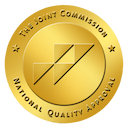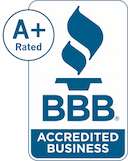A Guide to Drug & Alcohol Rehab: Montgomery, AL
The capital city of Alabama and the second largest city in the state, Montgomery is a bustling southern urban mecca. The Jackson Hospital Community Health Needs Assessment (CHNA): Fiscal Year 2022 reports that the poverty level in Montgomery County of 19.4 percent is lower than the state average of 23.9 percent, but the 25 percent of residents with a high school diploma in Montgomery County is lower than that of the entire state, which is 30.8%. These plus other social indicators can often influence mental health status and rates of drug and alcohol misuse.
Montgomery, Alabama Drug Abuse Statistics & Factors
High stress, low education, and poor mental health often increase the chances of people engaging in high-risk behaviors, such as drug and alcohol misuse, which can then lead to violence and crime. For example, approximately 1,144 inmates were serving time at Alabama Department of Corrections (ADOC) facilities in 2022 because of possession of controlled substances. There were also 2,186 drug arrests throughout the state in 2019, with 94.33% of those arrests being due to possession of drugs as opposed to sale of drugs. The majority of these drug arrests involved opioids and cocaine.
Rates of illicit drug abuse and dependence for Alabama residents between 2013 and 2014 were the same as national averages at 2.6 percent. Rates of alcohol misuse and dependence were 5.3 percent for Alabama residents – the same as the national average per the Behavioral Health Barometer: Alabama 2019. The Montgomery County Sheriff’s Office even reported that in 2021, there was such a large amount of methamphetamine on the streets that they witnessed it being given away at no cost.
How to Get to Oxford From Montgomery, AL
Driving Directions From Montgomery, AL to Oxford: Take I-65 N to exit 265A to merge onto I-22 W toward Memphis. In 153 miles, take exit 61 onto MS-30 W toward Oxford, West New Albany. Turn left onto MS-30 toward Oxford. In 15 miles, turn right onto CR-244. In 3 miles, turn left. In 500 feet, take a slight left, then turn right to arrive at Oxford Treatment Center. This route takes approximately 3 hours and 45 minutes.
Montgomery, Alabama Substance Abuse Trends
The Alabama Epidemiological Profile: Alcohol, Tobacco, Other Drugs Usage and Abuse 2020 places Montgomery County within Region 3 in the state for classification purposes. Residents in Region 3 reportedly had some of the lowest rates of alcohol misuse and dependency in the state while, combined with Region 2, adult residents had the highest percentage of misuse and dependency of illicit drugs in the past year. Residents in Region 3 reported the highest rates of needing but not receiving treatment for their past-year illicit drug use as well at 2.4 percent.
In the Gulf Coast High Intensity Drug Trafficking Area (GC HIDTA), which includes counties in Louisiana, Arkansas, Mississippi, Tennessee, and Alabama, methamphetamine is the largest drug threat in the region, according to the 2021 Drug Threat Assessment. Right behind methamphetamine, fentanyl and opioids pose the greatest threat to this area, followed by marijuana and cocaine.
Marijuana is a common drug of abuse in Alabama as well. The Alabama Drug Control Update lists marijuana as one of the top drugs cited as the primary drug of abuse at the time of admission into a substance abuse treatment program.
Similar to most areas of the country, Alabama is experiencing the opioid epidemic on a daily basis. Between 2021 and 2022, emergency department visits related to opioid overdose spiked significantly with more than 450 people being admitted throughout the state. Additionally, the state of Alabama had a much higher prescribing rate of opioids in 2020 than the national average, with 80.4 opioid prescriptions per every 100 people. The national average was 43.3 opioid prescriptions per every 100 people.
Executive Order 708, signed into law in 2017 by Alabama Governor Kay Ivey, created the Alabama Opioid Overdose and Addiction Council. The council has recommended methods to improve Alabama’s Prescription Drug Monitoring Program (PDMP) to make it more user-friendly and apt to recognize potential diversion, abuse, and addiction issues. Recommendations of the council seek to enhance access to the opioid antagonist medication naloxone (Narcan) to first responders and the general public throughout Alabama as a method of curtailing both opioid abuse and overdose fatalities, Alabama Media publishes. Alabama has a “Good Samaritan law” in HB208, which the Alabama Public Health department reports protects individuals who are trying to save a life by administering the potential overdose reversal drug. Additional legislation provides first responders and at-risk populations access to naloxone without a prescription via a Standing Order.
Resources for Substance Abuse Treatment in Alabama & Montgomery
In Alabama, mental health and drug and alcohol abuse and addiction treatment services are managed and overseen by the Single State Authority, the Alabama Department of Mental Health. Public treatment services (including Montgomery County drug addiction services) are provided in state-run facilities and contracted out to local community-based providers. ADMH distributes federal funding provided by the Substance Abuse Block Grant (SABG) for prevention, treatment, and substance abuse recovery support services in Alabama. The Division of Mental Health & Substance Abuse Services within the ADMH ensures comprehensive and integrated treatment for mental illness, substance abuse, and co-occurring substance misuse and mental health disorders.
Public treatment services in Alabama are provided on an as-needed basis, and residents may qualify for reduced, low-cost, or free services depending on financial status and family size. In Montgomery, Alabama, the Montgomery Area Mental Health Authority(MAMHA) is the public, nonprofit organization that serves as the Community Mental Health Center for Montgomery, Elmore, Lowndes, and Autauga counties.
Community service providers offer local treatment services, and ADMH hosts a list of Points of Contact with phone numbers for treatment referrals and options based on the county in which a person resides.
The ADMH Substance Abuse Provider Directory also lists public services and providers by Alabama county, including details on what they provide and the type of funding used. The Substance Abuse and Mental Health Services Administration (SAMHSA) hosts a Behavioral Health Treatment Services Locator to help individuals find local treatment resources that are recognized by the state as well. Private behavioral health treatment programs are licensed by the state and overseen by ADMH as well. These facilities often provide a wide range of comprehensive services and treatment options.
Links for Local Treatment and Additional Resources
Nonprofit organizations, state and local government agencies, community-based providers, and private facilities all offer mental health and addiction treatment services to residents in Montgomery, Alabama.
Links for local resources are listed here:
- 2-1-1 Connects Alabama: This is a free and confidential telephone referral service that works as an initial point of contact platform to help Alabama residents find and obtain local mental health and/or addiction treatment services.
- Alabama Possible: This nonprofit, statewide organization seeks to reduce the poverty level and help all Alabama residents reach their full and prosperous potential.
- NAMI Alabama: This grassroots advocacy group helps to reduce stigma surrounding mental health and improve resources for families and individuals with behavioral health needs.
- Alabama Tobacco Quitline: This group helps Alabama residents to stop using tobacco through coaching, referrals, and educational information.
- Central Alabama Alcoholics Anonymous (AA): Residents wishing to abstain from alcohol and drugs can attend meetings and fellowship opportunities through this 12-Step peer support program.
- River Region United Way: This advocacy group focuses on providing community resources, referrals, education, and social connections in an effort to enhance the local community.
- Council on Substance Abuse (CASA) NCADD (National Council on Alcoholism and Drug Dependence): This private, nonprofit organization is a member of the Community Anti-Drug Coalition of America (CADCA) and strives to promote better understanding of the preventable disease of addiction through educational, preventative, and supportive efforts.
- Alabama Association of Addiction Counselors (AAAC): This group certifies and provides continuing education and information for treatment professionals within Alabama.



